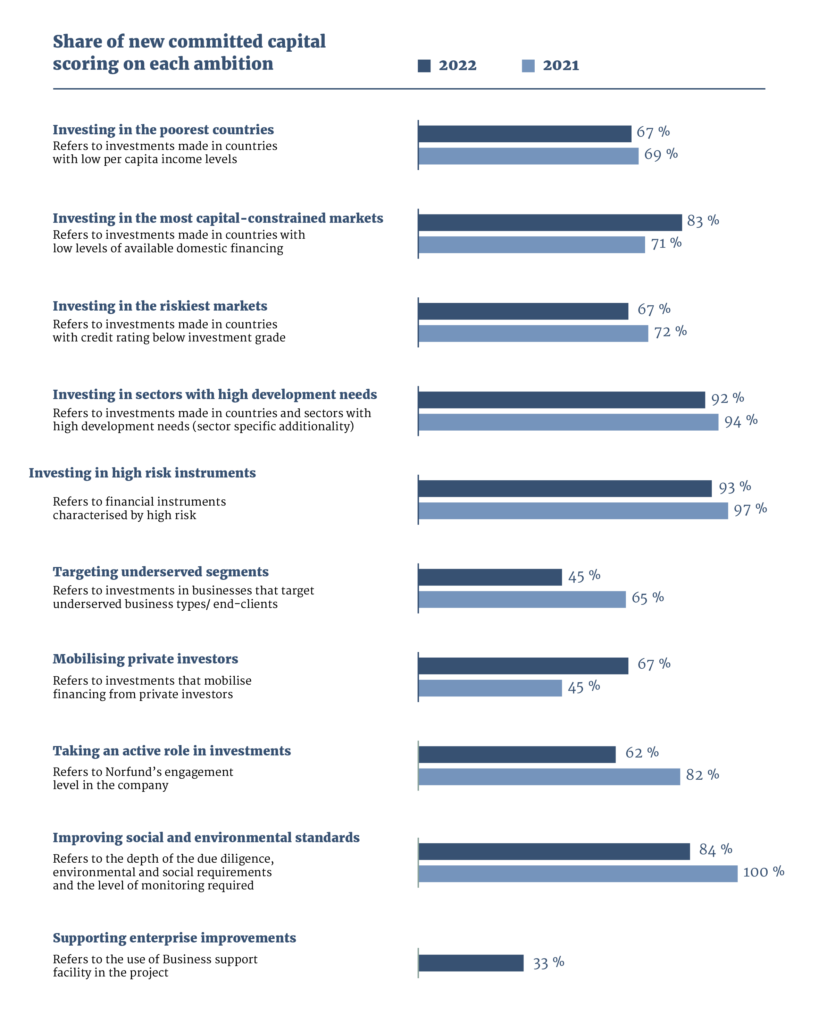Norfund is committed to making a difference by investing where capital is scarce and through active ownership.
The Norfund Act states that Norfund shall contribute to establishing viable, profitable undertakings that would not otherwise be initiated because of the high risk involved.
The extent to which an action contributes to an outcome that would not have happened otherwise is often referred to as ‘additionality’. Proving the additionality of our investments is challenging because it requires insights into what could have happened had we not invested.
What does it mean that an investment is additional?
Financially additional
According to the OECD, an investment is financially additional if it supports capital-constrained markets in which private sector partners are unable to obtain commercial financing with similar terms or quantities, or if it mobilises investment from the private sector that would not otherwise have invested.
Value additional
An investment is value additional if it provides non-financial value that the private sector is not offering through active ownership, promoting environmental and social standards or supporting enterprise improvement. Through our value additionality, we contribute to improving both the profitability and the development impact of the businesses in which we invest.
Development additionality
Development additionality is described as the development impact that arise as a result of investment that otherwise would not have occurred.

Ten ambitions on additionality
Norfund has a defined additionality framework that helps assess the additionality of our investments and ensure alignment with the OECD definition. This framework consists of ten additionality ambitions (see table below) reflecting both the financial and value additionality of our investments. For each ambition, we have identified relevant indicators to assess the extent to which we meet these ambitions. Investments under the new Climate Investment Mandate are subject to the same additionality assessment. Development additionality is assessed for each new investment by setting baseline and target values for key impact/ climate ambitions, describing what the investment aims to achieve.
Based on our experience with the use of the framework since 2018, the framework has been revised twice to better reflect the markets we operate in.
Additionality informs our investment decisions
The framework informs our investment decisions and the way we report on additionality. Each new potential investment is assessed against the ten ambitions, explained in the graph below, and is accompanied by a narrative description of additionality. In 2022, Norfund invested in 34 new companies and funds that were all assessed using the additionality framework. More information on which ambitions each investment is particularly additional on, is listed on the individual investment webpages on the Norfund website.
Percentage of committed capital to new projects in 2022 scoring materially on each additionality ambition (follow-on investments are not included):

Compared with last year’s results, new investments in 2022 scored slightly lower on several of the ambitions, but significantly higher on mobilising private investors. However, more of our committed capital was invested in economies with low access to capital (domestic credit to private sector) than in 2021. “Supporting enterprise improvements” through the use of our Business Support facility is a new indicator as of 2022.